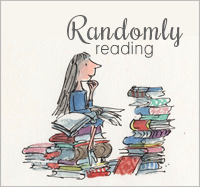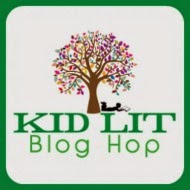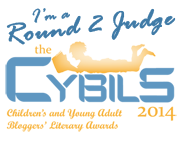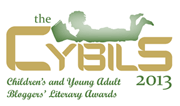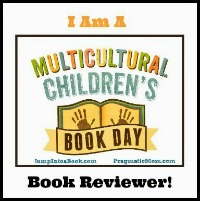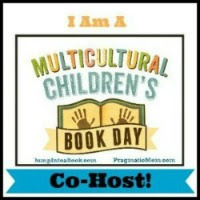It’s Monday! What are you reading? is a weekly meme hosted by Kathryn at Book Date. It’s Monday! What are you reading? - from Picture Books to YA is a kid lit focused meme just like the original and is hosted weekly by Jen at Teach Mentor Texts and Kellee at Unleashing Readers. The purpose is the same: to recap what you have read and/or reviewed and to plan out your reading and reviews for the upcoming week. Twitter: #IMWAYR
We've been reading lots of board books and here is a roundup of some of the latest board books for the youngest readers that we read last week.
Little Hoot by Amy Krouse Rosenthal, illustrated by Jen Corace
Chronicle Books, 2016, 28 pages, age 3+
Little Hoot loves to play with this forest friends. The only problem is that they always have to go to bed early, while Little Hoot must learn to stay up late, after all, he is an owl. Even as he begs to go to sleep, his parents insist he stay awake just more hour, then just 10 more minutes. Can Little Hoot do it? Rosenthal has taken the usual struggle of getting kids to bed on time and their attempts to put off bedtime and turned it around. Little Hoots predicament is sure to amuse all bedtime procrastinators.
Be sure to check out Little Hoot’s companion board books: Little Oink and Little Pea
Tubby/Bañito written and illustrated by Leslie Patricelli
Candlewick Press, 2017, 28 pages, age 3 months+
Leslie Patricelli’s Baby is back and it’s bath time. Read along in Spanish or English as Baby has some fun in the tub playing with bubbles, practicing swimming, counts duckies and toes, and getting washed. Then, wrapped in a clean, warm towel, washing as Daddy dries the bathroom before taking of naked. A fun addition to the favorite series.
Be sure to check out these other Spanish/English companion baby board books including: Blankie/Mantita, Huggy Kissy/Abrazos y Besitos, Yummy Yucky/¡Ñam! ¡Puaj!, The Birthday Box/Mi Caja de Cumpleaños, Hop! Hop!/¡Salto! ¡Salto!, Boo!/¡Bu!, Fa La La/Tra-la-la
When Your Elephant Has the Sniffles by Susanna Leonard Hill, illustrated by Daniel Wiseman
Little Simon, 2017, 26 pages, age 2+
Here is some sage advice from an unnamed narrator for when your elephant has the sniffles: do whatever you can to try to prevent him from sneezing. You can put your elephant to bed, but be sure to hide anything in the room that may cause him to sneeze. If he gets bored being in bed, do whatever you can to keep in there and resting. If your elephant sneezes, you just might end up with the sniffles, too. This charming book is sure to make kids laugh as the little girl in it tries so hard to take care of her elephant - because sometimes a person with a bad cold can feel just like an elephant in the room. Wiseman’s whimsical illustrations add much to the humor. Pair this book with
When Your Lion Needs a Bath by Susanna Leonard Hill, illustrated by Daniel Wiseman
Little Simon, 2017, 26 pages, age 2+
When your lion is smelly, it is definitely time to give it a bath. But lions don’t like water, so an unnamed narrator advises a young boy on the need to be pretty sneaky to get him in a tub. So the tub filled with bubbly water, lots of bath toys and try your best to trick your lion to get in the tub. Kids will no doubt laugh at the tricks and bribes used to finally get the lion bathed, but make sure all the doors in the house are closed, or uh-oh, you will have to start all over again. Kids are sure to recognize themselves in there two humor books, even if the tables are turned and the kids in the story become the caretakers. Wiseman’s illustrations are a playful here as in the companion book above.
Motor Mix: Flight by Emily Snape, illustrated by Rilla Alexander
Chronicle Books, 2017, 16 pages, age 3 months+
Young readers can mix and match things that fly in this interactive concept book. Young readers can go along with the kids, their friends, siblings, and even their pets for a ride on a rocket ship, an airplane, a lunar probe, a sea plane, and a hot air balloon. The left facing pages of the book show a stationary illustration of one of these machine, and the right side of the page, divided into three parts allows young readers to mix and match and make up their own, complete with sound words. A fun way for kids to to learn the names of things that fly, and to use their own imagination. With simple, block-like illustrations in bold colors diverse characters. Pair this book with
Motor Mix: Emergency by Emily Snape, illustrated by Rilla Alexander
Chronicle Books, 2017, 16 pages, age 3 months+
Here is the companion book to Motor Mix: Flight, though this one focuses on emergency vehicles, many of which even the youngest readers might be familiar with. Kids can go for a ride, with appropriate vehicle noises, on a firetruck, a highway patrol car, a snowplow, a tow truck, a ambulance, a lifeboat, and a helicopter. Or, they can invent their own, by flipping the divided parts of the right side page over the stationary illustration on the left facing page. This concept book offers a fun way for kids to learn the names of vehicles that help people, and is sure to generate questions about how they work. With simple, bold illustrations in bright colors and diverse characters.
My Little Cities: San Francisco by Jennifer Adams, illustrated by Greg Pizzoli
Chronicle Books, 2017, 22 pages, age 3 months+
Whether you are traveling to San Francisco or are already living there, this book is a charming way to introduce young readers to this exciting city. In very few words, Adams has managed to convey all the sights, sounds, and tastes that are to be found in San Francisco. From the Golden Gate Bridge and the twists and turns of Lombard Street to Chinatown and the sea lions at Fisherman’s Wharf, it is all there. Pizzoli’s simple, colorful illustrations includes not just the famous sights that everyone should see, but also reflects the diversity of the people who live there.
My Little Cities: Paris by Jennifer Adams, illustrated by Greg Pizzoli
Chronicle Books, 2017, 22 pages, age 3 months+
Ah, Paris, the city of lights and one of my favorite places. Once again, Adams and Pizzoli have captured the heart and diversity of this beautiful city. From the Jardin des Plantes (or Botanical Garden), the famous Shakespeare and Co., to Notre Dame and the Eiffel Tower, it’s all there, including people riding bikes with those wonderful French baguettes in their baskets. Just as she have in all her My Little Cities books, Adams includes a list of all the sights included in the book, with a short description of all of them.
Be sure to check out the previous companion books in this series: My Little Cities: New York and My Little Cities: London
Peek-a-Moo! written and illustrated by Nina Laden
Chronicle Books, 2017, 22 pages, age 3 months+
Babies and toddlers love to play peek-a-boo and this is a perfect book for that. Each left facing page has the words Peek-a and behind the right page cut out is the answer - all rhyming with you. The last Peek-a has a mirror, so young readers see themselves reflected and become part of the book. Peek-a-Moo perfectly captures that moment of anticipation between not knowing and discovering, so characteristic of the earlier books. Each book in this series focuses on a different place, and here it is a farm, so each answer relates to animals or vegetable found there. Laden’s illustrations are bright, energetic and often humorous.
Peek-a-Moo! is the fifth book in this series, so be sure to check out these companion books: Peek-a-Who! Peek-a-Zoo! Peek-a-Boo! and Peek-a-Choo-Choo!
Flora and the Ostrich: An Opposites Book written and illustrated by Molly Idle
Chronicle Books, 2017, 20 pages, age 3 months+
Flora is back in a new board book and with a new friend. Flora and the Chicks was a counting book, in this companion book, Flora meets an ostrich with purple feathers that match her purple sunsuit, but that is were similarities end. When Flora says hello to the ostrich, he responds with good bye. Playing with the concept of opposites, Flora and her new friend gradually get together in friendship. Young readers learn about opposites with illustrations the perfectly illustrate the words used - among them - near/far, under/over, stop/go, and ending with apart/together. And once again, Idle has managed to include so much expression in facial and body language on pages that contain one word. Some of the pages have flaps the reveal a word opposite. A fun book for young readers and the perfect companion to Flora and the Chicks.
Enjoy! What are you reading?







































